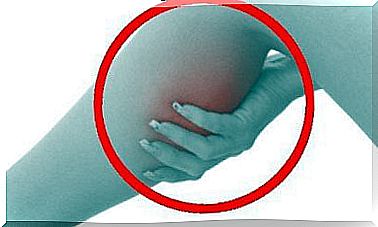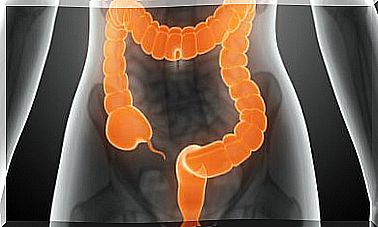What Does Science Say About Caffeine?
There are many divided opinions about caffeine. Nevertheless, scientific studies show that, in healthy adults, caffeine has beneficial effects if consumed in moderation.

What does science say about caffeine? The possible negative effects of the consumption of this substance on health are of interest to both science and the general population.
However, studies on the subject are inconclusive. The only known bad effect of caffeine consumption is during pregnancy. This substance is also contraindicated during pregnancy and breastfeeding.
Apart from this particular case, science tells us, through epidemiological studies, that this substance helps reduce the risk of many chronic diseases. But before we learn more about the health effects of caffeine, let’s first take a look at where this active compound comes from.
Where does caffeine come from?
Caffeine is the most consumed stimulant substance in the world. The main sources of caffeine are:
- Cola nuts ( Cola acuminate )
- Cocoa beans (Theobroma cacao)
- Yerba mate ( Ilex paraguariensis )
- Guarana blackberries (Paullinia cupana)
- Roasted coffee beans (Arabica and Robusta) and tea leaves ( Camellia sinensis), the main food sources globally
In addition to the sources cited, this substance is also found in the following products:
- Certain pain medications
- Soda
- Energy drinks
- Food supplements
The concentration of caffeine varies quite a bit from one drink to another. Coffee is the most caffeinated drink with an average of 100 mg per cup. Behind the coffee is the mate with an average of 78 mg per cup. And behind the mate is black tea with 55 mg per cup.

Caffeine absorption and metabolism
Once ingested, caffeine is rapidly absorbed from the gastrointestinal tract (bioavailability is 100%) and is metabolized in the liver, forming 3 important metabolites:
- 3,7 – dimethylxanthine
- 1,7 – dimethylxanthine
- and finally 1,3 – dimethylxanthine
What happens after this substance is absorbed? Science tells us that it has physiological effects on the body. Find out more in the rest of this article.
Physiological mechanisms
First of all, caffeine works as an antagonist against the adenosine receptor in the brain. Its structure being similar to adenosine, it can occupy adenosine receptors (especially A1 receptors in the hippocampus and A2 receptors in areas of the brain rich in dopamine).
Furthermore, by blocking the union of adenosine in neurons (those that induce sleep), caffeine stimulates the activity of the central nervous system (CNS).
In general, a low consumption of this substance, namely between 20 and 200 mg per day, produces positive effects on the feeling of well-being, the level of alert and energy. However, a higher dose can cause harmful effects such as anxiety and nervousness, especially in people accustomed to drinking drinks rich in caffeine.
The link between caffeine consumption and Parkinson’s disease
Parkinson’s disease is the result of the progressive decrease in dopaminergic neurons in the substantia nigra.
By improving the performance of the dopaminergic system, thanks to its antagonistic effect on adenosine receptors, caffeine stimulates the release of dopamine by attenuating the deterioration of fine and thick motor activities.

The link between caffeine consumption, obesity and diabetes
Science tells us that caffeine influences weight loss. Concretely, this substance influences the metabolic rate, the energy expenditure and the thermogenic activities (in particular on the lipids).
300 mg / day of this substance helps to inhibit the AMP-phosphodiesterase cycle to increase cyclic AMP. When it antagonizes adenosine receptors, the release of norepinephrine increases. These effects induce weight loss by increasing lipolytic activity.
In addition, many studies suggest that there is an inverse relationship between the consumption of caffeine from coffee and the risk of developing type 2 diabetes. In individuals who consume at least six cups of coffee per day, the risk of developing the disease is reduced by 35%. In those who consume between 4 and 6 cups, the risk decreases by 28%.
Its effect on mineral absorption
Consuming a drink that contains caffeine at the same time as a main meal makes it harder to absorb some important minerals like iron and calcium.
Some cohort studies have indicated that a high dose of caffeine increases urinary calcium excretion, which increases the risk of bone damage. Therefore, the maximum recommended daily amount is:
- 4 cups of black coffee
- 3 cappuccinos
- 6 cups of coffee
Note : In addition to following these recommendations, it is also important to consume adequate calcium.
Caffeine during pregnancy and breastfeeding
The reason why this substance is contraindicated during pregnancy and the lactation period is because it can be found in the placenta and stimulate the metabolic rate of the fetus.
A high dose of caffeine ingested during pregnancy is associated with the development of birth defects, abortions, low birth weight and behavioral changes in the newborn.
Likewise, after consumption, this substance is found in breast milk, thus promoting irritability and sleep disturbances in the baby. That is why the maximum dose of caffeine during pregnancy and the breastfeeding period is 200 mg per day.
In short, what is the impact of caffeine on health according to science?
As this is a substance found in the most consumed drinks worldwide, it is important to know its mechanisms and effects on the body. It is also important to know what are the maximum recommended doses in order to avoid harmful alterations and to take maximum advantage of the benefits of this substance.
Most studies in humans show that moderate consumption (less than 400 mg / day) has beneficial effects on the body, neurodegenerative diseases and metabolic diseases.
Nevertheless, keep in mind that this substance is contraindicated during pregnancy and the lactation period. It is also good to know that it has diuretic effects that may need to be controlled.









